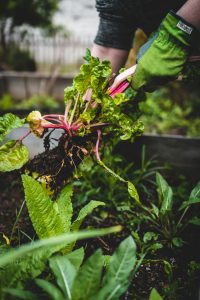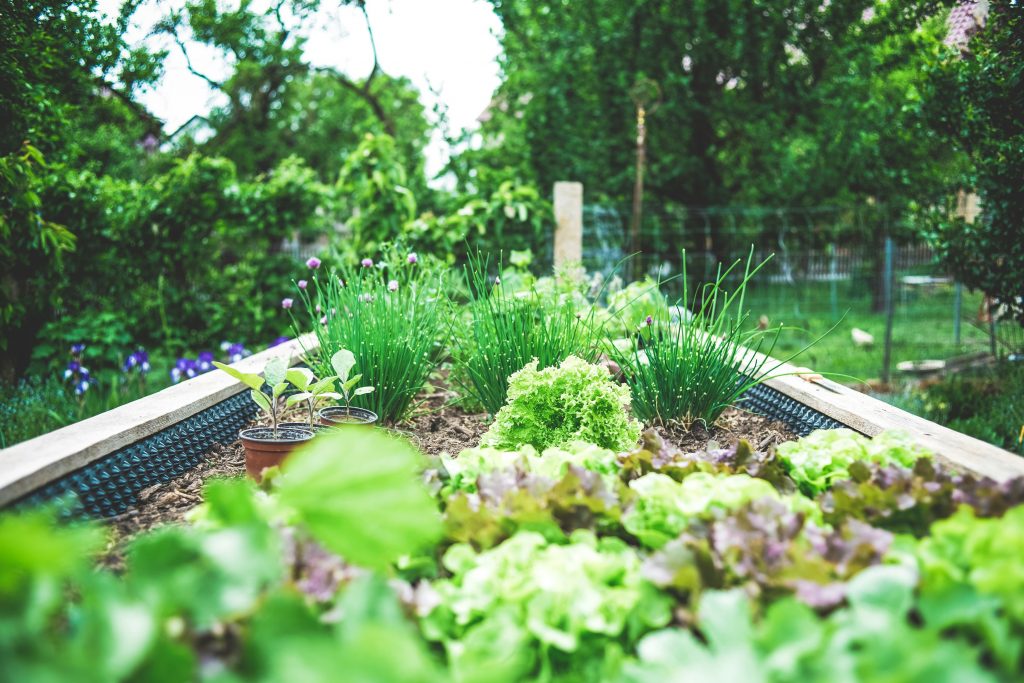Urban Gardening
I share some select product recommendations and this page contains affiliate links. If you take action (click on the link and purchase the product), I will earn some loose change. I hope you take advantage of my recommendations. You do not pay a higher price. – Jeffrey McLain

The topic of urban gardening is a popular one. I wrote Backyard Big: Growing Food in Your Backyard for the beginner. It has information on growing fruit, vegetables, and herbs. It also includes a month-by-month gardening schedule. I have yet to see a book that brings fruit and gardening growing advice together with a schedule. It is one of a kind! Read on for more information about urban gardening and for my other book recommendations.
In the concrete jungles of modern cities, where skyscrapers dominate the skyline and green spaces are scarce, urban gardening, also called urban agriculture or city gardening emerges as a beacon of hope. The trend of cultivating small green havens amid the hustle and bustle of urban life is gaining momentum, offering a myriad of benefits ranging from improved mental well-being to sustainable food production. In this comprehensive guide, we will delve into the world of urban gardening, exploring its various forms, benefits, and practical tips for getting started.
As urbanization accelerates, cities face the challenge of providing inhabitants with access to nature. City gardening serves as a creative solution, transforming balconies, rooftops, and even windowsills into vibrant pockets of greenery. The movement is fueled by a growing awareness of the importance of green spaces for mental health, air quality, and overall well-being.

Urban gardening comes in various forms, adapting to the limited space available in cities. Container gardens, rooftop gardens, vertical gardens, and community gardens are some popular types. Each has its unique advantages, allowing individuals to choose the approach that best suits their space and lifestyle.
One of the primary benefits of urban gardening is its positive impact on the environment. Green spaces in the city help combat the urban heat island effect, reduce air pollution, and contribute to overall biodiversity. Moreover, growing plants in urban areas promotes carbon sequestration, aiding in the fight against climate change.
The therapeutic effects of gardening on mental health are well-documented. Urban gardening provides city dwellers with an opportunity to connect with nature, reducing stress and anxiety. The act of nurturing plants and witnessing their growth can be a fulfilling and calming experience, fostering a sense of accomplishment and purpose.
With the rise of city gardening, individuals can take a step towards self-sufficiency in food production. Growing fruits, vegetables, and herbs at home not only ensures a fresh and organic food supply but also reduces the carbon footprint associated with transportation and distribution. This sustainable approach to food production contributes to a more resilient and localized food system.
Getting Started

Before embarking on this journey, it’s essential to assess the available space and sunlight exposure. Different plants have varying light requirements, and understanding these factors will help determine the types of plants that can thrive in a specific urban setting.
Selecting the right plants is crucial for successful growing. Consider the local climate, the available space, and your personal preferences. Herbs like basil, mint, and rosemary are excellent choices for small spaces, while tomatoes, peppers, and lettuce can thrive in containers on balconies or windowsills.
Since city gardening often involves growing plants in limited spaces, choosing the right containers is essential. Containers should have proper drainage to prevent waterlogged soil. Additionally, selecting high-quality potting soil enriched with organic matter ensures that plants receive the nutrients they need for healthy growth.
Proper watering is a key factor in successful gardening. Container gardens may require more frequent watering than traditional gardens, as containers tend to dry out faster. Regular maintenance, such as pruning, weeding, and fertilizing, is crucial to keep the plants healthy and thriving.
Creative Approaches to Urban Gardening
Vertical gardening is an innovative solution for maximizing space in urban environments. By utilizing vertical surfaces such as walls or trellises, gardeners can grow a variety of plants without occupying valuable floor space. This approach not only adds visual interest but also increases the overall greenery in a confined area.
Rooftop gardens transform unused rooftop spaces into lush green retreats. These gardens can range from simple container setups to more complex designs with built-in irrigation systems. Rooftop gardens provide insulation, reducing energy consumption, and offer a unique perspective of the cityscape.
Community gardens are collaborative spaces where urban residents come together to cultivate shared plots. These gardens foster a sense of community, allowing individuals to share knowledge, resources, and the joy of gardening. Community gardens contribute to neighborhood beautification and often serve as educational hubs for sustainable practices.
Challenges?

It is possible to be faced with challenges related to limited space and resources. However, creative solutions such as vertical gardening, container gardening, and community initiatives can help overcome these constraints. Additionally, advancements in technology, such as hydroponics and aquaponics, enable efficient cultivation without traditional soil requirements.
Cities come with their own set of challenges, including pollution and pests. Implementing organic pest control methods and choosing resilient plant varieties can help combat these issues. Moreover, regular monitoring and maintenance can prevent potential problems before they escalate.
City gardening presents valuable educational opportunities, especially for children and young adults. Schools and community centers can incorporate gardening into their curricula, teaching students about plant biology, environmental science, and sustainable practices. Hands-on experience in urban gardening fosters a deeper understanding of the natural world.
Beyond personal well-being, city gardening has a positive impact on social dynamics. Community gardens, in particular, create spaces where people from diverse backgrounds come together, fostering a sense of unity and shared responsibility. These green oases contribute to the overall vibrancy and resilience of urban communities.
Another book I recommend to tackle your challenges is Square Foot Gardening by Mel Bartholomew. This book is on its third edition and is a popular choice.
Conclusion
Growing plants in the urban environment is a powerful movement that transforms urban landscapes, one pot, container, or rooftop at a time. By reconnecting city dwellers with nature, promoting sustainable practices, and fostering community bonds, it addresses the challenges posed by urbanization. Whether you’re a seasoned gardener or a novice with a few potted plants, there’s a place for everyone in the thriving world of urban gardening. Embrace the green revolution, and watch as your urban space transforms into a flourishing oasis of life and vitality.
For a jump start on your urban growing adventure, check out my book Backyard Big: Growing Food in Your Backyard. I wrote this book for the beginner. It has information on growing fruit, vegetables, and herbs. It also includes a month-by-month gardening schedule.

